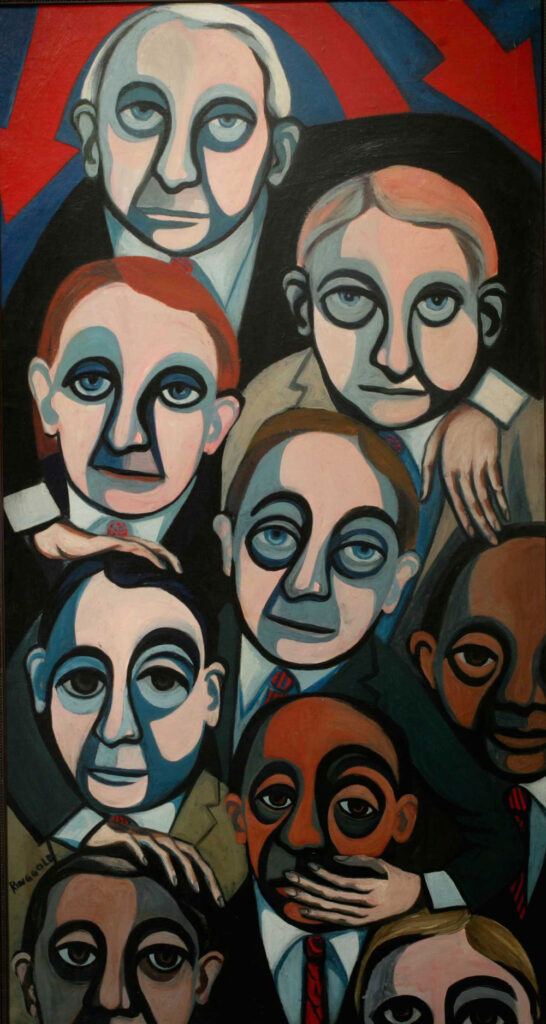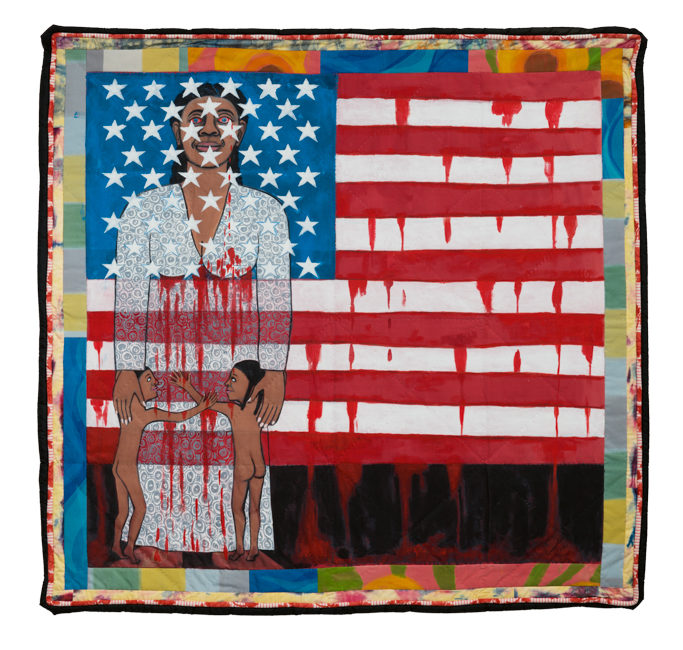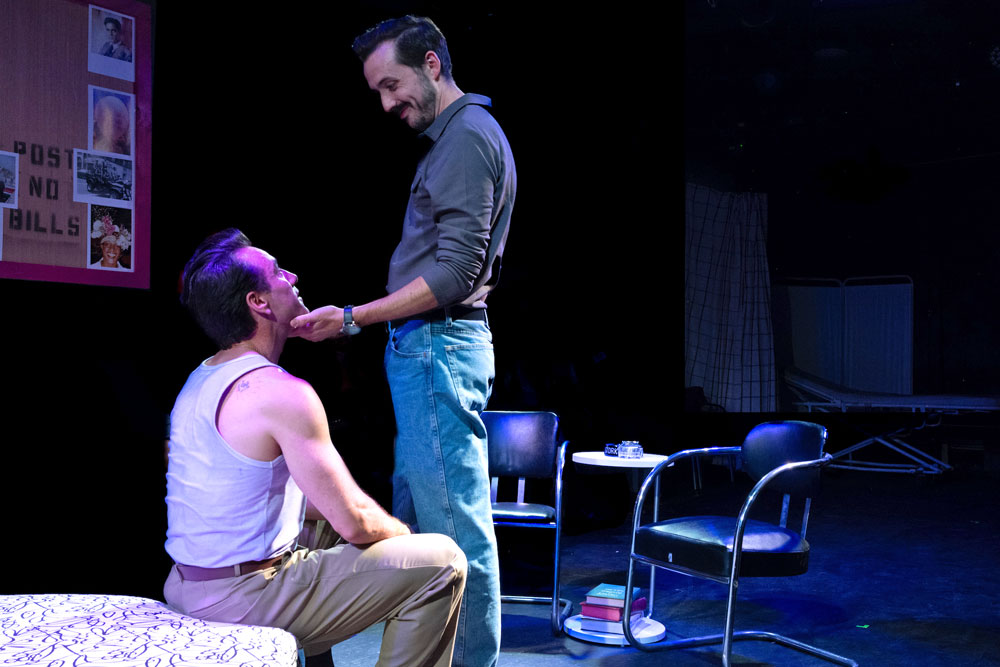
Art can make you greedy. That reminder came while walking through Faith Ringgold: American People, an outstanding exhibition now in its closing weeks at the Museum of Contemporary Art. Dynamic, bold and unflinching; much of it is an unabashed declaration of personal and collective racial truth. An artist of many dimensions, Ringgold’s creative voice can be expressed in multiple mediums and her tone can shift sharply from defiant and unequivocable to blissfully euphoric. Extremely prolific, viewing a retrospective of her art untaps latent emotions and provokes surprising responses to the messages she’s sending with the her images.
No artist is guaranteed success. That doesn’t diminish their drive to pursue their passion. And like most dedicated and determined artists, it can take time, effort and pain to find, or accept, one’s creative voice. Recently out of art school and teaching art in New York City public schools, a fateful encounter with a 57th St. gallerist provided Ringgold with her Eureka moment. Mimicking French techniques or the proven style of other artists wasn’t her purpose. She needed to use what she learned from her art classes to communicate her personal interpretation of the world around her. As a Black woman born in 1930, raising a family, teaching and striving to become an artist in New York, she well understood the world she moved in was not a fair or just one.
In the early to mid 60s, when works reflecting her core artistic spirit started to emerge, she employed symbolism to express her assessment of race relations in the United States. Often her creative statements would be made subtly when commenting on the civil rights movement or about “what was happening to Black people at that time”. Like a sizable contingent of the Black population during the period, she questioned who was really making the decisions in some organizations self charged with advancing Black America’s cause. That doubt would manifest in her paintings. As civil rights consciousness and activism evolved and began to diverge in its tactics and goals, Ringgold’s art also changed to mirror how her own awareness was maturing. It expanded and became more insistent and overt. Outside her studio, Ringgold became a tireless organizer and activist who demanded institutions like the Museum of Modern Art (MOMA) and the Whitney promote and exhibit more Black and women artists.

Denouncing racism by giving it a visual frame of reference, her painting became more piercing and intense. Ringgold’s The Flag is Bleeding series places vulnerable Black figures before an American flag dripping with blood, turning a symbol of pride into one of reflection and shame.
Throughout her career, Ringgold traveled widely and, while visiting Paris; was particularly moved by Picasso’s Guernica. Considered one of the greatest anti-war declarations ever created, it inspired her to complete “American People Series #20: Die, in 1967. Depicting her conception of a race riot, the large-scale painting now hangs alongside several of Picasso’s most celebrated works at MOMA.
For Ringgold, advocating for women’s right would become just as important as promoting social parity for Black Americans. She also switches mediums when using art to highlight gender based challenges. Rather than oil on canvas, she uses textiles and constructs figurative sculpture to show how closely grievances of the past and present day obstacles are linked. In her Slave Rape series, beautiful and intricately sewn textiles, completed in collaboration with her mother, Willi Posey; highlight the reality of rape prior to the abolition of slavery. By inserting depictions of herself and her daughters into other of her works in the series, she updates the perspective to show how the psychological vestiges of that harrowing period persists in modern life.

Ringgold’s capacity for expressing joy, promise, and love of identity explode in her children’s books and in a set of work she completed in the 1990s called the French collection. Both take imagination to new realms of creative possibility. The books focus on a little girl, Cassie Louise Lightfoot, who taps into her own imagination to travel wherever she wants to go when she’s up on “Tar Beach”, the rooftop of the family’s Harlem apartment building. Illustrations from the book line the gallery’s walls and beautifully rejoice in the boundless creativity of a child’s mind.
In her French collection, she created large wonderfully crafted quilts, each referencing an iconic French location or revered artistic masters like van Gogh or Gauguin. She then inserted the image of a single or several Black people who become the centerpiece of the scene. By superimposing a Black identity in the core of hallowed western European touchstones, Ringgold affirms the validity of the Black presence. Picasso painting a Black nude. A Black couple sunbathing at St. Tropez. Renowned Black and European artists converged together at Le Café des Artiste. Each quilt’s border carries a story, written in cursive, about what’s taking place in the scene. Some feature Ringgold’s own avatar. Playful, satirical and brilliant; they point to how elastic possibilities can be in the worlds of “what if” and “why not”. Full of wonder, inventiveness and mettle, Faith Ringgold: American People counts as an experience you’d prefer not to end. At 93, the artist is adamant that she still has a lot more art to do. That promise, along with the wealth of virtuosity filling her creations, would have anyone greedily craving for more.
Faith Ringgold: American People
Through February 25, 2024
Museum of Contemporary Art
220 East Chicago Ave.
Chicago, IL 60611

![PrideArts [title of show] Raining Gold](https://rowgseat1.com/wp-content/uploads/2024/09/a53939222075_ceaf585bae_k.jpg)
